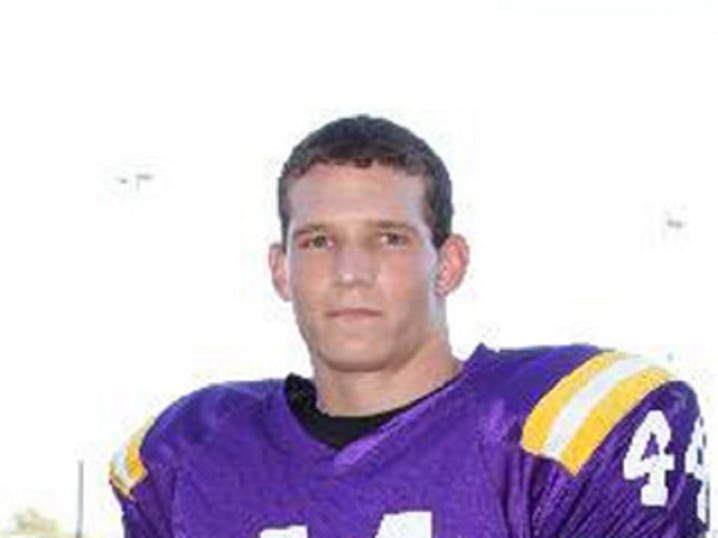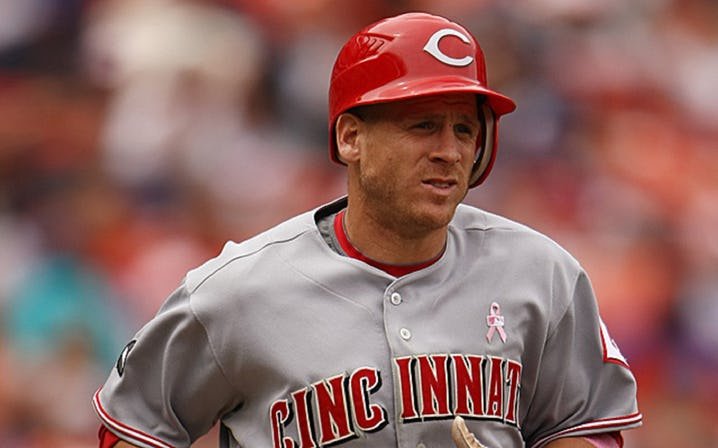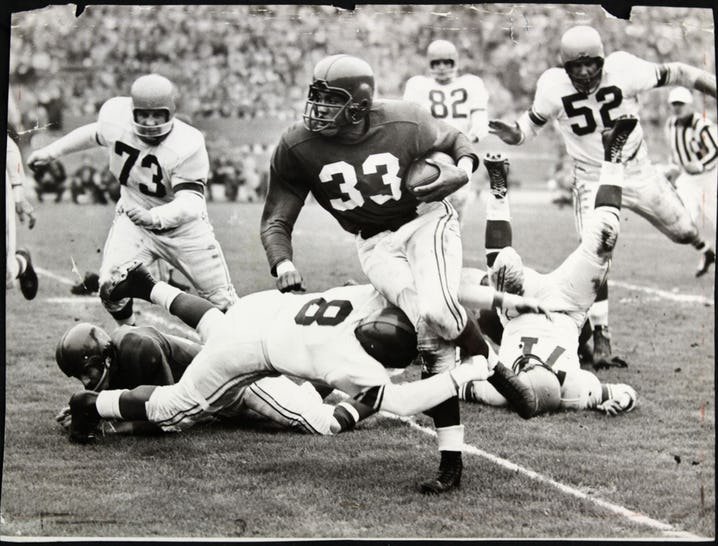
Image Credit
Yesterday I did the story of Mike Webster, a Pro Hall of Famer who had suffered with Chronic Traumatic Encephalopathy after receiving repeated concussions during his long pro-football career from 1974 – 1990. He played center for the Pittsburgh Steelers for 15 seasons. In his position he faced much bigger players with their helmets crashing into him while their forearms pounded into his head. Officially Webster was never treated for a concussion. In fact he was known as never having complained about anything. He paid the ultimate price with CTE.

Image Credit
Initially I thought that CTE was mainly a NFL related problem, but in researching the history of athletes that had or have CTE, the names of these victims have included players in other sports as well. There is no doubt that the majority of the victims are former NFL players but it is interesting to note that other sports can be involved too. Here is a list of the top 20 notorious cases of CTE which I found in The Sportster (http://www.thesportster.com/entertainment/top-20-notorious-cases-of-cte-head-injury):

Image Credit
- Chris Benoit: A Canadian wrestler who competed from the mid-1980’s until 2007. In 2007, he murdered his wife and son, later committing suicide by hanging himself in his home gym.

Image Credit
- Jovan Belcher: Kansas City Chiefs’ linebacker Jovan Belcher had shot his girlfriend and then himself, leaving behind a young daughter. He was just 25 years old.

Image Credit
- Junior Seau: One of the greatest linebackers of all time, who played 20 seasons in the NFL and was a twelve time Pro Bowl selection. Seau committed suicide via gunshot wound to the chest back in 2012. Junior Seau was just 43 years old.

Image Credit
- Nathan Stiles: The youngest deceased player to have suffered from CTE, Stiles was in high school when he died. Stiles was a running back playing in his senior year for his high school, when he sustained a serious hit to the head, and later died from second-impact syndrome. Basically, he sustained head trauma too soon after sustaining an initial concussion. Stiles was just 17 years old at the time of his death & was already showing signs of CTE.

Image Credit
- Ryan Freel: Ryan Freel is the first baseball player to be diagnosed with CTE. He played nine years in MLB and retired after a series of injuries. While playing center field he sustained a serious head injury while chasing a fly ball. Just months later he took a ball to the head and sustained a concussion. He committed suicide in 2012 by gunshot wound.

Image Credit
- Owen Thomas: He was just 26 when he was found to have suffered from CTE. He was a Penn State offensive lineman who committed suicide.

Image Credit
- Mike Webster: One of the greatest offensive linemen of all time. He suffered from severe CTE after his playing career, experiencing depression, dementia and staggering pain. Webster died in 2002, and was the first NFL player to have been diagnosed with CTE.

Image Credit
- Andre Waters: The hard hitting safety for the Philadelphia Eagles and Arizona Cardinals, was found dead in his home in 2006. He committed suicide via gunshot.

Image Credit
- Derek Boogaard, Wade Belak & Rick Rypien: All were tough guys in the NHL. Rypien and Belak committed suicide while Boogaard died of a substance overdose. All three had a history of concussions.

Image Credit
- Chris Henry: Drafted in 2005, Cincinnati Bengals’ wide receiver Chris Henry had a rough career that was as riddled with controversy as it was short. He was accused of assault, had multiple arrests for illegal substance and gun charges. In 2009, at age 26, Henry was killed in a car accident. His brain showed signed of CTE.

Image Credit
- Dave Duerson: Played in the NFL, as a safety for eleven years before retiring. Duerson committed suicide in February 2011, and prior to his death, he texted his family indicating that he wanted his brain examined and used to study CTE and concussion trauma. The four time Pro Bowl selection was 50 years old when he took his own life.

Image Credit
- Andrew “Test” Martin: WWE wrestler Andrew “Test” Martin was a member of the promotion from 1998 until 2008. Just a year later in March 2009, he was found dead in his apartment from an oxycodone overdose. After his death, doctors determined he had suffered from CTE. He was the second wrestler to be diagnosed with the condition post-mortem.

Image Credit
- Reg Fleming: Playing 23 years in the NHL Reg, Fleming was a tough player who played from the mid 1950’s to the 70’s. he suffered from advanced CTE later in life. He died in 2009 and shortly thereafter, Boston University researchers determined that he had suffered from the condition for decades. Fleming was the first known hockey player to have the condition.

Image Credit
- Joe Louis: Participating in 70 fights between 1934 and 1951, he won 66 and is considered one of the first athletes to challenge the racial barrier in the United States. He was believed to have suffered from CTE in his later years. Known for his ability to soak up damage in the ring, Louis was known for being “punch drunk” in his later years.

Image Credit
- John Mackey: Mackey was one of the most dominant tight ends of his time, playing nine seasons for the Baltimore Colts. The five time Pro Bowl selection and 1992 inductee to the Hall of Fame suffered from advanced CTE later in life, until his death in 2011. His wife sued the NFL after his death. Mackey was one of the players whose brain degeneration prompted the NFL’s “88 Plan,” named for his jersey number. This plan essentially put aside aid money for retired NFL players suffering from degenerative diseases who required full time care.

Image Credit
- Sugar Ray Robinson: One of the most decorated boxers of all time is also argued by many to have suffered from serious CTE later in life. He suffered financially later in life and developed Alzheimers before dying in 1989 at just 67.

Image Credit
- Bernie Kosar: Was an NFL quarterback from 1985 to 1996. Kosar dealt with multiple concussions throughout his career and has suffered pain and mental issues ever since his retirement. In recent years he has received treatment and advocated methods of treatment for other players who have developed CTE.

Image Credit
- Ollie Matson was an NFL running back who played 17 seasons in the NFL. Made the Pro Bowl six times and being inducted into the Pro Football Hall of Fame. He died back in 2011 of dementia and was later revealed to have suffered from advanced CTE.

Image Credit
- Bob Probert: Possibly the NHL’s best enforcer of all time, Bob Probert, died in 2010. Boston University (one of the leading CTE research centers in the United States), found evidence that he was suffering from CTE.

Image Credit
- Brett Favre: After many amazing years with the Green Bay Packers, Favre still holds the record for most consecutive starts by an NFL player. Unfortunately, with so many games under his belt, he sustained many knockdowns and tackles. In October 2013, he revealed that he was dealing with memory loss, which prompted many experts to speculate that he is suffering from a minor case of CTE.

Image Credit
So as you can see, it seems that the common element among these players is concussions and/or head injury. CTE appears to result from these two factors and is not limited to football. When athletes sustain blows to the head, even though these are not always a diagnosable concussion, there seems to be risk for the Tau proteins to develop in the brain which lead to CTE. With time this protein build-up can cause mental conditions including depression, dementia and erratic behavior and/or irrational outbursts. In many situations it can lead to suicide. And as noted even though it is most common among football players, other sports areas such as boxing, hockey, baseball and wrestling have been affected by CTE.

Image Credit
According to The Sportster there are researchers that have suggested that Lou Gehrig, who had Amyotrophic Lateral Sclerosis, may also have had CTE which they felt could have sped up his degeneration. Gehrig had participated in other sports prior to his baseball career where he had sustained many head injuries. Some even speculated that Muhammad Ali may also have had CTE and some even have joked that “Iron” Mike Tyson may have it.

Image Credit
Even recently another situation arose about CTE. Aaron Josef Hernandez, an American football tight end in the NFL for the New England Patriots ended his career when he was arrested for the murder of Odin Lloyd, a semi professional player who was dating the sister of Hernandez’s fiancée. Hernandez was immediately released by the Patriots after his arrest in 2013 and after a trial, he was found guilty of first degree murder in 2015. But during this trial regarding Lloyd, Hernandez was indicted for a double homicide in 2012 but got an acquittal after this trial in 2017. According to the news, five days after his acquittal he was found dead in his cell by hanging.

Image Credit
According to Live Science (https://www.livescience.com/60515-aaron-hernandez-facts-about-cte.html) an autopsy of Hernandez’s brain revealed that he had a severe form of Chronic Traumatic Encephalopathy. During a press release the family’s lawyer announced that Hernandez had, “the most severe case they had ever seen in someone of Aaron's age.” The article also went on to say that his CTE had progressed to the level that physicians usually see in a 60 year old. This was striking news.

Image Credit
Dr. Erin Manning, a Neurologist at the Hospital for Special Surgery in NYC said, “There is research looking into ways to diagnose [CTE] with special types of imaging studies. But nothing has been confirmed at this time. If it can be diagnosed before death, then likely strides can be made in determining what type of symptoms accompany the disorder.

Image Credit
Live Science went on to say that because it is so difficult to study CTE, researches still don’t know what causes it. They just know that there is a link between CTE and frequent blows to the head. Dr. Manning also said that the only common threads in CTE cases are that they involve brain damage and are commonly seen in contact sports like boxing and US football.

Image Credit
According to the Mayo Clinic (http://www.mayoclinic.org/diseases-conditions/chronic-traumatic-encephalopathy/basics/symptoms/con-20113581) “CTE can cause cognitive impairments, memory loss and depression associated with other forms of dementia. People with CTE can also become more aggressive, impulsive or prone to substance abuse. In addition, the condition has been linked symptoms including difficulty with balance and swallowing, as well as suicidal behavior.
There are different stages of CTE with different symptoms
Live Science (https://www.livescience.com/60515-aaron-hernandez-facts-about-cte.html) listed these stages as follow:
- First and Least-Severe Stage of CTE: Is associated with headaches and some difficulty concentrating more than anything else
- Second Stage of CTE: It's not until the second stage of the disease that people struggle with managing their emotions. At this point, people may have mood swings, depression, short-term memory loss and some problems with language.
- Third Stage of CTE: The emotional, cognitive and memory symptoms that emerge in Stage 2 worsen.
- Fourth Stage of CTE: Including the emotional, cognitive and memory symptoms, people can experience dementia symptoms that might be confused for those stemming from Alzheimer's disease or Parkinson's disease, according to the Brain study.

Image Credit
As you can see, CTE is a very serious and dangerous disorder that leads to deterioration of the individual and a breakdown in his/her ability to function in daily activities. There are some instances where some of these sufferers actually either kill or commit suicide. Many families’ lives are torn apart and others suffer as well. We all need to take this very seriously and take measures to prevent head injuries. This is a greater concern for children who participate in contact sports when very young. In my next article I will go over some concerns regarding this area. I hope you will continue to join me in this next area of youth sport concerns.
Thank-you for reading my article on Chronic Traumatic Encephalopathy – The Tragedy Continues: Not Just In the NFL. If you would like to follow me, please check HERE
These are my previous articles. if you are interested in reading it:
Neuroplasticity: Hope For People With Anxiety?
@cabbagepatch/neuroplasticity-hope-for-people-with-anxiety
Neuroplasticity: How to deal with Anxiety Disorders Like Panic Attacks
@cabbagepatch/neuroplasticity-how-to-deal-with-anxiety-disorders-like-panic-attacks
Neuroplasticity: Cognitive Behavior Therapy (CBT)
@cabbagepatch/neuroplasticity-cognitive-behavior-therapy-cbt
Neuroplasticity: Mindfulness Based Cognitive Therapy
@cabbagepatch/neuroplasticity-mindfulness-based-cognitive-therapy
Neuroplasticity: Self-Directed Neuroplasticity Exercises
@cabbagepatch/neuroplasticity-self-directed-neuroplasticity-exercises
Neuroplasticity: Music & Music Therapy
@cabbagepatch/neuroplasticity-music-and-music-therapy
Neuroplasticity: Meditation and Anxiety
@cabbagepatch/neuroplasticity-meditation-and-anxiety
Neuroplasticity: Brainwave Entrainment
@cabbagepatch/neuroplasticity-brainwave-entrainment
Anxiety and CBD: An Introduction to Cannabinoid
@cabbagepatch/anxiety-and-cbd-an-introduction-to-cannabinoid
Childhood Injuries: Concussions
@cabbagepatch/childhood-injuries-concussions
Childhood Injuries: Post Concussion Syndrome & Recovery & Safety Measures To Prevent Concussions
@cabbagepatch/childhood-injuries-post-concussion-syndrome-and-recovery-and-safety-measures-to-prevent-concussions
Youth Sports: The Benefits of Youth Sports & Increase Incidents of Concussions
@cabbagepatch/youth-sports-the-benefits-of-youth-sports-and-increase-incidents-of-concussions
Are You Ready For Some Football? - The Continuing Saga of Concussion & Chronic Traumatic Encephalopathy in Former NFL Players & Other Concussion Victims
An American Tragedy: Story of Mike Webster, Pro Hall of Famer & CTE
@cabbagepatch/an-american-tragedy-story-of-mike-webster-pro-hall-of-famer-and-cte
